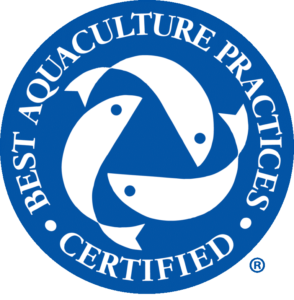Written by: Elizabeth Elam MS, RD, LDN
Do you ever stand at the fish counter completely bewildered by your choices? Your doctor recommends eating fatty fish for heart health, but how do you choose? Fresh or farm-raised? Which type is least contaminated and most environmentally friendly? These questions, among others, stem from an abundance of misinformation about our food supply. While the Dietary Guidelines for Americans recommend eating 8 ounces of seafood per week, only one in 10 Americans are doing so. That’s a sad statistic when well-designed studies have linked consuming two, 3-ounce servings of fatty fish (salmon, herring, mackerel, anchovies, or sardines) per week with lowering blood pressure and heart rate, improving blood vessel function, lowering triglycerides and reducing inflammation. In fact, eating the recommended amount of fatty fish lowers chances of dying from heart disease by more than one-third! So… how do you choose? Here is a broad overview of general fishing concepts and useful tips when making seafood selections.
First, let’s distinguish between wild-caught and farm-raised seafood. Wild-caught fish are caught with the use of nets, hand-lines, divers, or traps. Farm-raised fish are raised in tanks or enclosures. Each have pros and cons when it comes to safety and sustainability. Regarding safety, toxins are a major concern with the most prevalent being mercury, polychlorinated biphenyls (PCBs), and dioxins. Mercury is a natural, toxic metal and is most prevalent in large wild-caught fish (king mackerel, swordfish, marlin, bluefin tuna and orange roughy). PCBs and dioxins are industrial chemicals found more often in farm-raised fish.
Other concerns include pesticide and antibiotic use, artificial coloring, overcrowding, and environmental impact of fishing practices- with the most skepticism pointing to farm-raised fish. While it is generally recommended to choose wild-caught fish, not all wild-caught fish is sustainable due to overfishing and environmentally damaging fishing practices. Farming can be very beneficial if done in a responsible way. Currently, about 50% of the seafood consumed in the United States is farmed. All fish farms in the United States must follow FDA regulations.
The better way to make an informed decision about your seafood purchase is by looking at the label. The most environmentally responsible, farm-raised fisheries follow the Global Aquaculture Alliance’s “Best Aquaculture Practices” (BAP) and will have that label on the packaging. BAP labeling can also be found on wild-caught seafood, indicating that those fish were caught using sustainable practices. (Sustainable, meaning the fish were caught in a way that has less impact on the long-term vitality of the species being fished, other fish species, and the wellbeing of the communities dependent on the fisheries.) Sometimes, fisheries can follow best practices and not bear the BAP label. Refer to the website listed in the next paragraph for more information.
Country of origin will also appear on the label. Almost 80% of seafood in the United States is imported. While the U.S has regulations in place to ensure the safety of our imports, only a small amount of imports are inspected. For this reason, its best to do a little research. Monterey Bay Seafood Watch has a fantastic website where you can search a specific variety of fish and learn what to look for. It covers everything from country of origin to fishing method and gives, “Best Choices,” “Good Alternatives,” and what to avoid.
One word that currently does not appear on fish labels is the word “organic”. The USDA National Organic Program is in the process of developing standards for organic seafood. The label will only apply to farm-raised seafood, as wild-caught seafood would be extremely difficult to control and evaluate.
To recap, aim to eat two, 3 to 4-ounce servings of fish a week, mostly coming from seafood rich in heart-healthy, omega-3 fatty acids (salmon, herring, mackerel, anchovies, or sardines). Study the label of the seafood package to determine if it was farm-raised or wild-caught and if the country of origin is in the U.S. Also consider looking for indications of sustainable, environmentally responsible, or best fishing practices for the most eco-friendly choices. In addition, try and choose local seafood as there is a better chance you are receiving a fresh product. And finally, vary the type of seafood you eat, don’t stick to just one type. By doing so, you will reduce your exposure to possible seafood contaminants and help to lower pressure on wild fish that have become over-popular seafood choices.
Learn More About Nutrition Services
Example of seafood labels:




